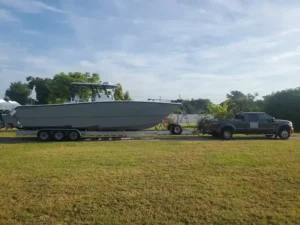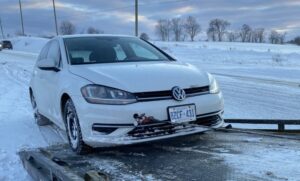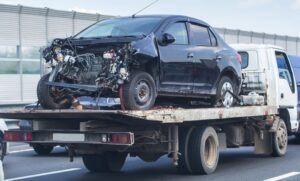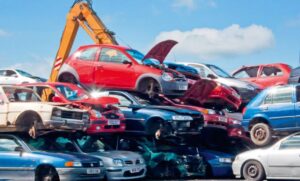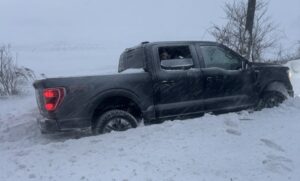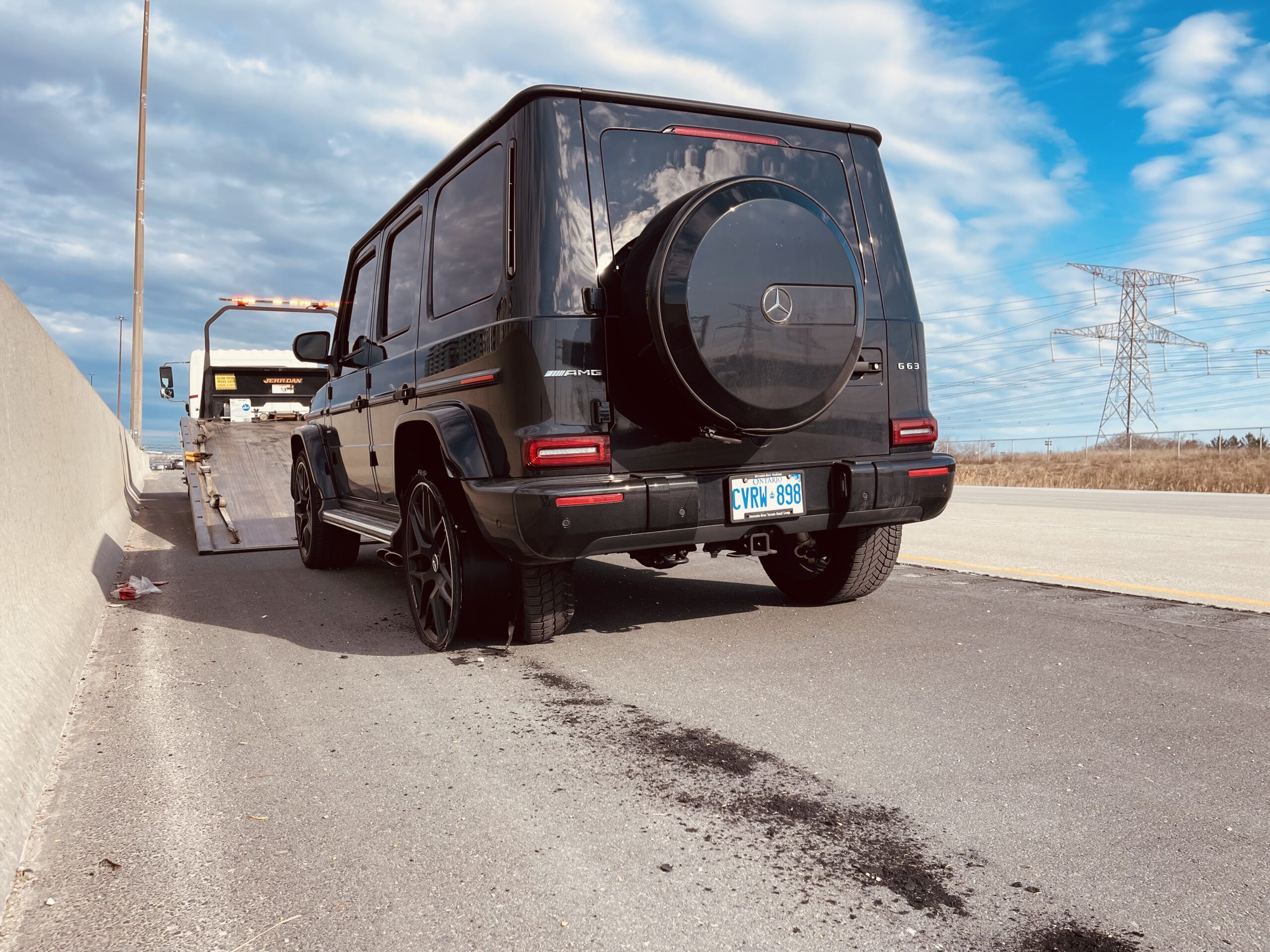All-Wheel Drive (AWD) vehicles have become the standard for many families and commuters across Ontario, particularly in areas like Aurora, where snow, ice, and unpredictable weather demand superior traction. AWD systems—found in popular SUVs, crossovers, and even many luxury sedans—offer enhanced safety and stability by constantly or automatically distributing engine power to all four wheels.
However, the very mechanical sophistication that makes an AWD vehicle so capable on a slippery road also makes it exceptionally vulnerable when it needs to be towed. Unlike older, simpler two-wheel drive (2WD) vehicles, an AWD car cannot be simply dragged or partially lifted without risking catastrophic and costly damage to its complex drivetrain.
At Pars Towing, a leading towing service in Aurora and Greater Ontario, we specialize in the safe and proper handling of all vehicle types, especially those with sensitive AWD and 4WD systems. This comprehensive guide will detail why towing an AWD car is unique, the inherent risks of improper methods, and the one solution that guarantees the safety of your vehicle.
- Learn More >>>>Cheap Towing Toronto: Affordable Roadside Service
The Mechanics of the Problem: Why AWD is Different
To understand the solution, you must first understand the mechanism that creates the challenge.
A. The Permanently Engaged Drivetrain
In a standard two-wheel drive vehicle (either front-wheel drive or rear-wheel drive), only two wheels receive power from the engine. When the vehicle is towed using a wheel lift, the wheels that are on the ground (the non-drive wheels) are allowed to spin freely, while the drive wheels are lifted, thus protecting the transmission and drivetrain from movement.
The fundamental difference with all-wheel drive is that its system is always partially or fully engaged, ensuring that power can be delivered to the front and rear axles whenever traction is needed.
- Transfer Case and Differentials: An AWD system uses a transfer case (or an equivalent electronic clutch pack) to manage power distribution between the front and rear axles. It also relies on differentials on both the front and rear axles to allow wheels on the same axle to turn at different speeds when cornering.
- The Towing Risk: If a tow truck uses a standard wheel-lift to raise only the front or rear wheels of an AWD vehicle, the two wheels left on the ground begin to roll. This rolling action forces the internal components of the differentials, the driveshaft, and the transfer case to spin. Since the vehicle’s engine is off, these components are turning without the proper lubrication from the transmission pump, which is often only active when the engine is running.
- The Resulting Damage: The lack of lubrication causes extreme friction and heat build-up. In a matter of miles, this can lead to overheating, component binding, and ultimately, catastrophic failure of the transmission and transfer case. This type of damage can cost thousands of dollars to repair and can easily void the vehicle’s warranty.
B. The Owner’s Manual Mandate
The consensus among major automotive manufacturers of AWD vehicles is overwhelmingly clear. Nearly all companies, including Subaru, Audi, and most premium brands, explicitly state in their owner’s manuals that the only approved method for towing an AWD vehicle is with all four wheels completely off the ground. Ignoring this directive is not only risky but will almost certainly void the manufacturer’s warranty on the drivetrain.
When you contact Pars Towing, the first question our dispatchers ask is about your vehicle’s make, model, and drivetrain type. This is the critical first step in ensuring we dispatch the correct equipment to adhere to the manufacturer’s and safety guidelines for towing an AWD car.

Comparing Towing Methods: The Only Safe Solution
When a vehicle breaks down or is involved in an accident, a towing operator has a few methods at their disposal. For towing an AWD car, however, only one method is considered safe, while the others carry unacceptable risks.
A. The Unsafe Methods
1. Wheel-Lift Towing (Two Wheels on the Ground)
The most common and fastest towing method involves a hydraulic yoke that lifts either the front or rear set of wheels, leaving the other two wheels on the pavement.
- Why it Fails for AWD: As explained above, allowing two of the four drive wheels to rotate forces the entire driveline to spin unlubricated. This is the single biggest cause of damage when towing an AWD car.
2. Tow Dollies on One Axle
A tow dolly is a small, two-wheeled trailer that lifts one axle of a vehicle. While dollies are a common tool, using a standard tow dolly that lifts only the front wheels (or only the rear wheels) on an AWD car still leaves the other two drive wheels on the ground, which will still engage and damage the AWD system.
- Note: Professional towing companies can use two sets of dollies (one for the front and one for the rear) to lift all four wheels off the ground. This, however, is often more time-consuming and less stable than the preferred method.
3. Flat Towing (Four Wheels on the Ground)
This method involves connecting a tow bar to the front bumper and pulling the vehicle with all four wheels rolling on the road.
- Why it Fails for AWD: Unless a very specific procedure involving disconnecting the driveshaft (a major mechanical task) is performed, flat towing an AWD vehicle is a recipe for disaster. Even with the transmission in neutral, the internal components of the transfer case are often still linked, causing internal stress and damage. Flat towing an AWD car is almost universally prohibited by manufacturers.
- Learn More >>>> Heavy duty towing service
B. The Gold Standard: Flatbed Towing for AWD Cars
The safest, most reliable, and only manufacturer-approved method for towing an AWD car is the use of a flatbed tow truck.
1. What is Flatbed Towing?
A flatbed tow truck (also known as a rollback) utilizes a long, flat deck that can be hydraulically tilted and lowered to the ground. The disabled vehicle is either driven or carefully winched onto the deck. Once secured, the entire deck is leveled, and the vehicle is transported with all four wheels completely off the road surface.
2. The Benefits for AWD Drivetrains:
- Zero Drivetrain Stress: Because the vehicle is completely lifted, the wheels are not rotating. The entire drivetrain—including the transmission, transfer case, and differentials—remains static and experiences no stress, no friction, and no heat buildup.
- Full Stability and Protection: Once secured with heavy-duty straps and chains at all four corners, the vehicle rests securely on the stable platform, eliminating any risk of suspension damage or wear from road bumps during the tow.
- Applicability for All Conditions: Flatbed trucks are also ideal for vehicles involved in accidents, those with low ground clearance (like many performance AWD models), or those with mechanical issues that prevent the wheels from safely rotating.
For any situation involving a disabled AWD vehicle in Aurora or across Ontario, Pars Towing will always dispatch a flatbed tow truck. We consider flatbed towing the non-negotiable requirement for towing an AWD car safely and professionally.
- Learn More >>>>
What to Do When Your AWD Car Needs Towing in Aurora
Being stranded is stressful, but a few simple steps can ensure your AWD vehicle is protected until help arrives.
A. The Critical First Step: Communicate Your Drivetrain
When you call Pars Towing for roadside assistance in the Aurora area, immediately and clearly state: “I need a tow for an All-Wheel Drive vehicle.”
This simple piece of information is the most important factor in the entire operation. It ensures that our dispatch team immediately bypasses any other towing option and confirms the use of a flatbed truck equipped to handle the task.
B. Gather Essential Vehicle Information
Have the following details ready when you call:
- Make and Model: (e.g., 2021 Subaru Outback, 2018 Audi Q5). This helps the operator determine the specific tie-down points.
- Location: Be as specific as possible (e.g., “Northbound Yonge Street just past Wellington Street”).
- Nature of the Breakdown: (e.g., accident, flat tire, engine failure).
- Transmission Type: Automatic or Manual (though for AWD, the flatbed rule remains the same).
C. On-Site Preparation
Once the Pars Towing flatbed arrives:
- Confirm the Method: Politely confirm with the operator that a flatbed truck will be used to ensure all four wheels are off the ground.
- Ensure Proper Hook-Up: Our professional operators will use the vehicle’s factory-designated tow points or a secure anchor point on the frame. Do not let anyone attach ropes or chains to the axle, control arms, or body panels, as this can cause severe damage when towing an AWD car.
- Supervise the Strapping: Our operators use soft straps over the wheels and multiple anchor points on the flatbed to secure the vehicle, minimizing metal-to-metal contact and ensuring a stable transport.
- Learn More >>>> Medium duty towing service

Pars Towing: Aurora’s Specialist in Towing AWD Car Systems
Towing technology is not static. As vehicles become more complex—with sophisticated AWD, electric, and hybrid powertrains—the skill required by the towing operator must also evolve. Pars Towing is dedicated to upholding the highest standards of safety and professionalism in the industry.
A. Certified and Experienced Operators
Our technicians are fully trained not only in operating heavy flatbed recovery equipment but also in the specific, gentle techniques required to winch and load all-wheel drive and four-wheel drive vehicles. They understand the mechanics of the transfer case and differentials and take every precaution to prevent damage. We operate in full compliance with all Ontario Ministry of Transportation (MTO) safety standards.
B. The Right Fleet for the Job
Our investment in a fleet of modern, well-maintained flatbed tow trucks is a direct reflection of our commitment to the safety of your vehicle. Whether you drive a compact AWD crossover or a heavy-duty 4×4 truck, we have the appropriate equipment to ensure safe, damage-free transport. When we are called to handle a situation requiring towing an AWD car, our equipment is non-negotiable.
C. Local Service, Global Standards
As a local service in Aurora, we are familiar with the unique challenges of the York Region, from tight residential streets to remote rural routes where a successful recovery demands precision. Combining this local knowledge with the industry’s best practices for handling complex drivetrains makes Pars Towing the trusted choice for towing an AWD car.
- Learn More >>>>Light duty towing service
Final Considerations
The safety of your all-wheel drive vehicle depends on the towing method used. Never allow a tow truck operator to lift only two wheels of your AWD car. Always insist on flatbed service. The difference in cost between a flatbed tow and an improper wheel-lift tow is negligible compared to the thousands of dollars in transmission and drivetrain repairs you could face later.
By choosing Pars Towing, you are selecting a partner that respects the mechanical integrity of your vehicle and prioritizes damage-free recovery. We are here 24/7 to provide prompt, professional, and correct towing service across Aurora and Greater Ontario.
Protect your investment. Insist on a flatbed when towing an AWD car.
For immediate and safe flatbed service for your AWD vehicle in Aurora, contact Pars Towing today.

